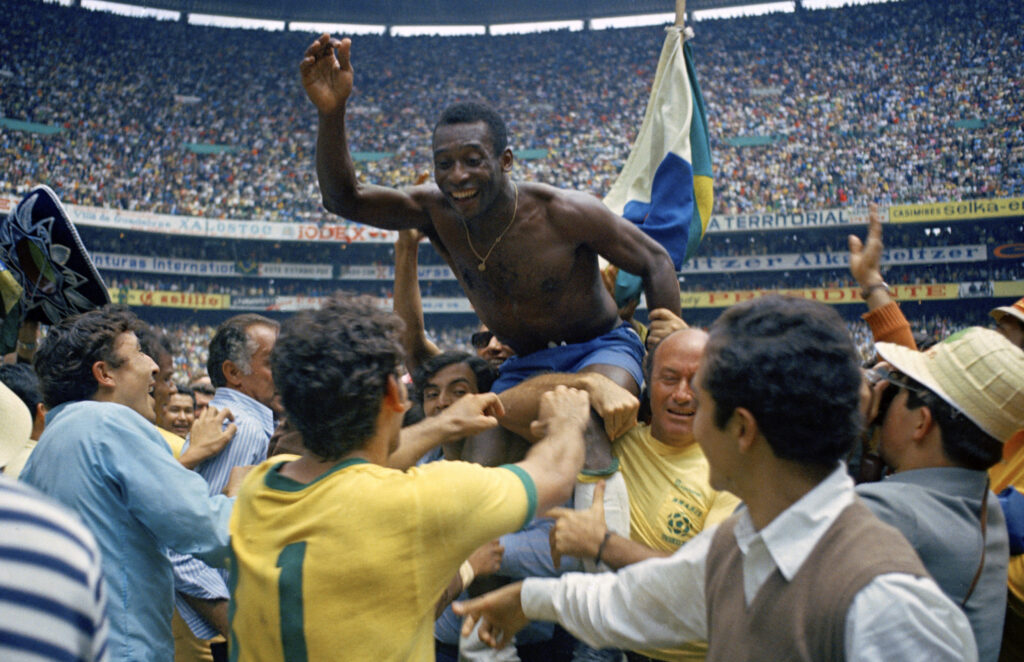The body of Pele, the greatest football player of all time, will be laid to rest at the home of Santos, where he enchanted the world. Pele, who died at the age of 82 on Thursday, will go straight from the Albert Einstein Hospital to Estádio Urbano Caldeira in Vila Belmiro at dawn on Monday and the coffin will be placed in the centre of the pitch. The public wake is expected to begin at 10am. The Associated Press has the story:
Pelé’s funeral, burial to be Mon. in hometown Santos
Newslooks- SAO PAULO (AP)
The stadium where Brazilian soccer great Pelé played some of the best matches of his career will also hold his funeral on Monday and Tuesday.
Santos, the club where Pelé played in Brazil, said in a statement the public will be able to pay their final respects at Vila Belmiro Stadium, outside Sao Paulo.
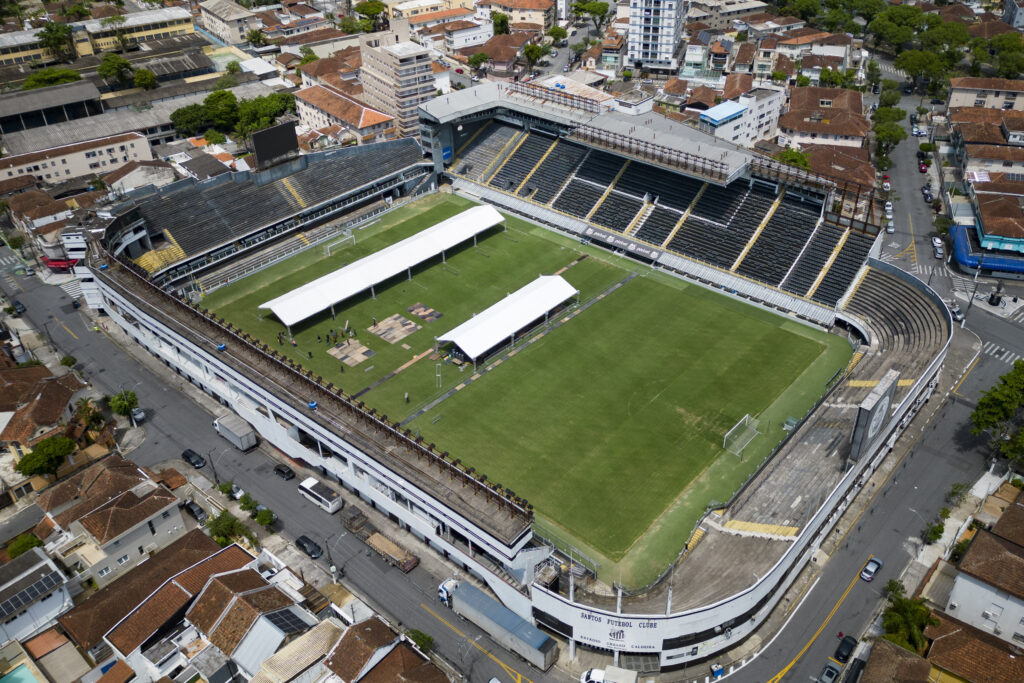
Pelé, whose full name was Edson Arantes do Nascimento, died Thursday after a long battle with cancer. He was 82.
Santos said the coffin carrying the three-time World Cup champion will leave Albert Einstein hospital in Sao Paulo early Monday morning and will be placed in the center circle of the field.
Visitation will start Monday at 10 a.m. and finish the next day at the same time.
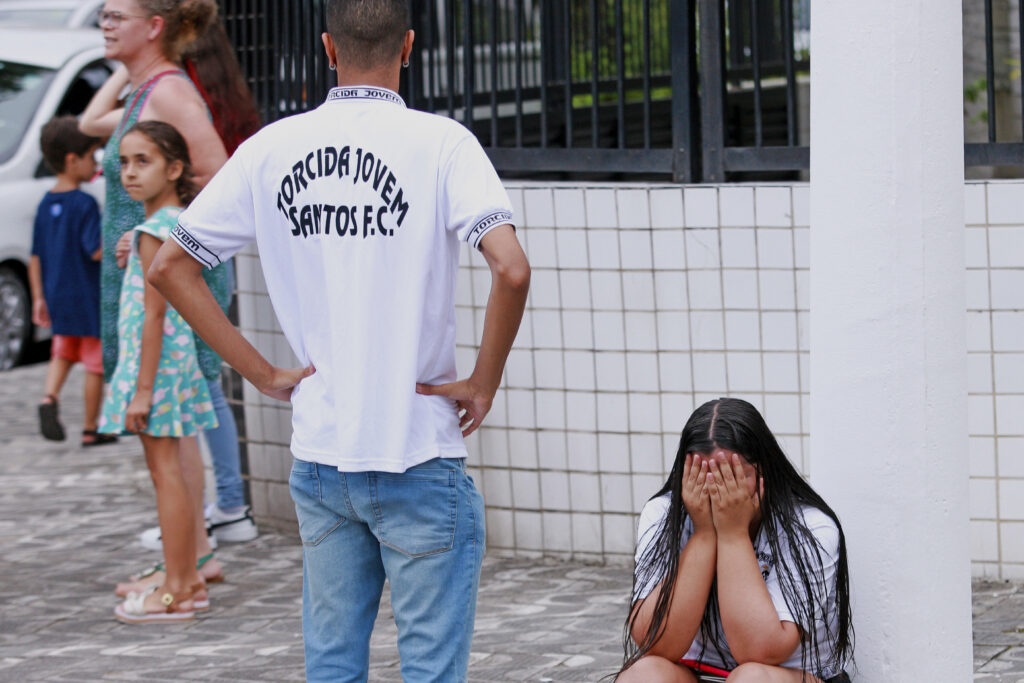
Pelé’s casket will be carried through the streets of Santos and will pass in front of the home of his 100-year-old mother, Celeste. Recent reports in Brazilian media say Pelé’s mother cannot leave her bed and is not lucid.
The burial will take place at the Memorial Necrópole Ecumênica, a vertical cemetery in Santos. Only family will attend.
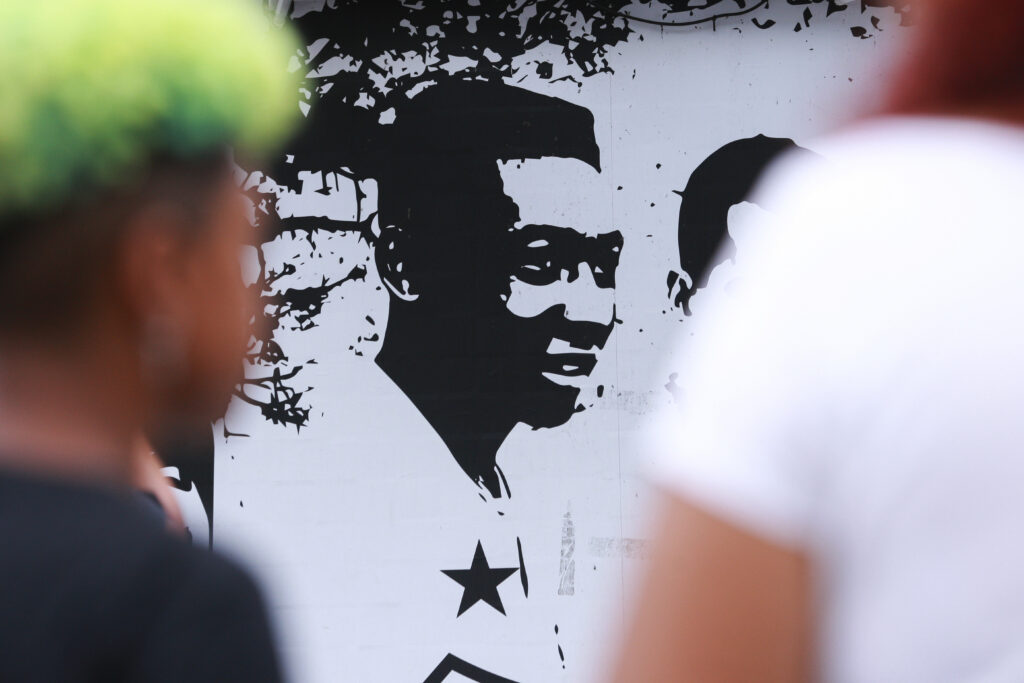
Pelé has a home in Santos, where he lived most of his life. He spent his last years in the city of Guarujá.
Pelé had a colon tumor removed in September 2021. Neither his family nor the hospital have said whether it had spread to other organs. He returned to the Albert Einstein hospital on Nov. 29 with COVID-19 and a respiratory infection.
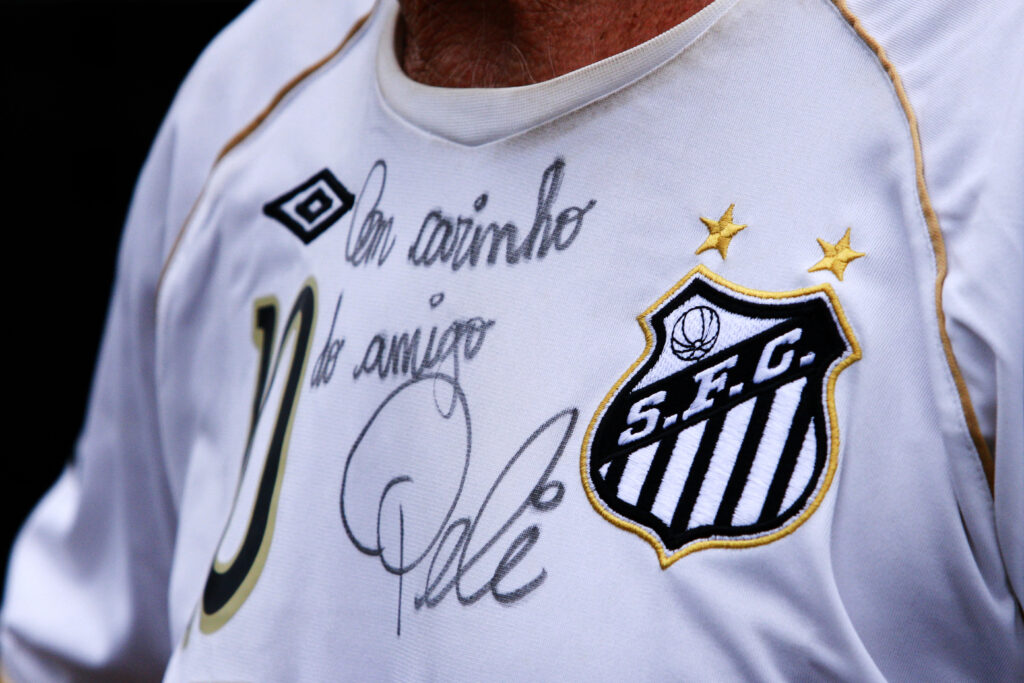
Last week, the hospital said in a statement his cancer had advanced.
Pelé led Brazil to World Cup victory in 1958, 1962 and 1970 and remains one of the team’s all-time leading scorers with 77 goals. Neymar tied Pelé’s record during this year’s World Cup in Qatar.
As ‘The King,’ Pelé enchanted fans and dazzled opponents
Newslooks- SAO PAULO (AP)
Pelé was simply “The King.” He embraced “the beautiful game” of soccer in his 1958 World Cup debut for Brazil and never really let go.
He won a record three World Cups and was widely regarded as one of his sport’s greatest players. His majestic and galvanizing presence set him among the most recognizable figures in the world.
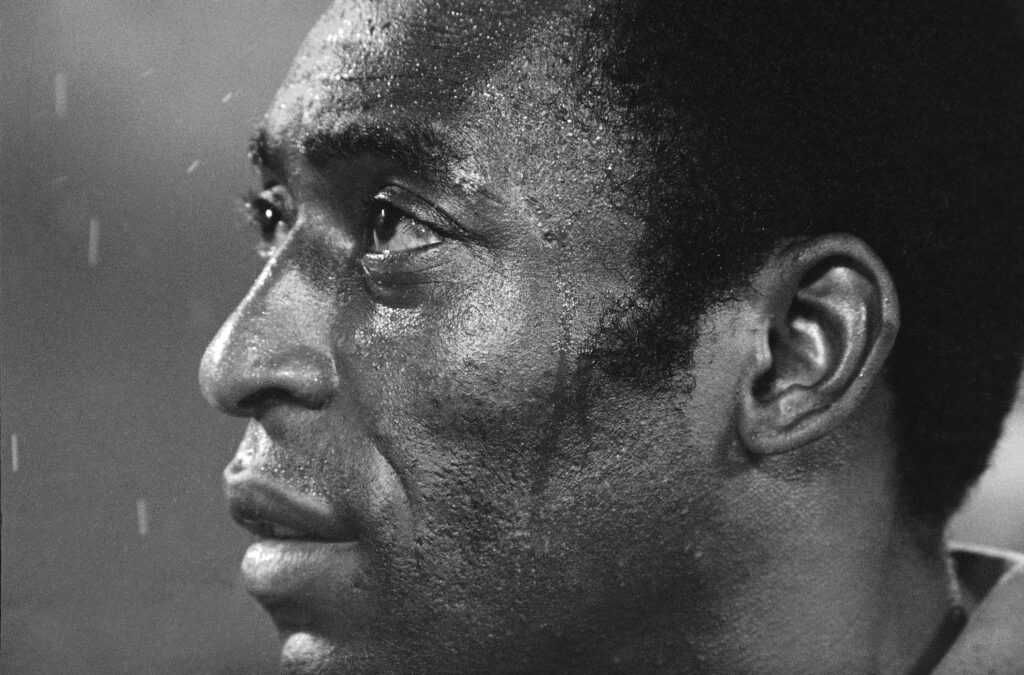
Pelé died Thursday at 82. He had undergone treatment for colon cancer since 2021.
Pelé was among the game’s most prolific scorers and spent nearly two decades enchanting fans and dazzling opponents. His grace, athleticism and moves on soccer’s highest stage transfixed all. He orchestrated a fast, fluid style of play that revolutionized the sport — a flair that personified Brazilian elegance on the field.
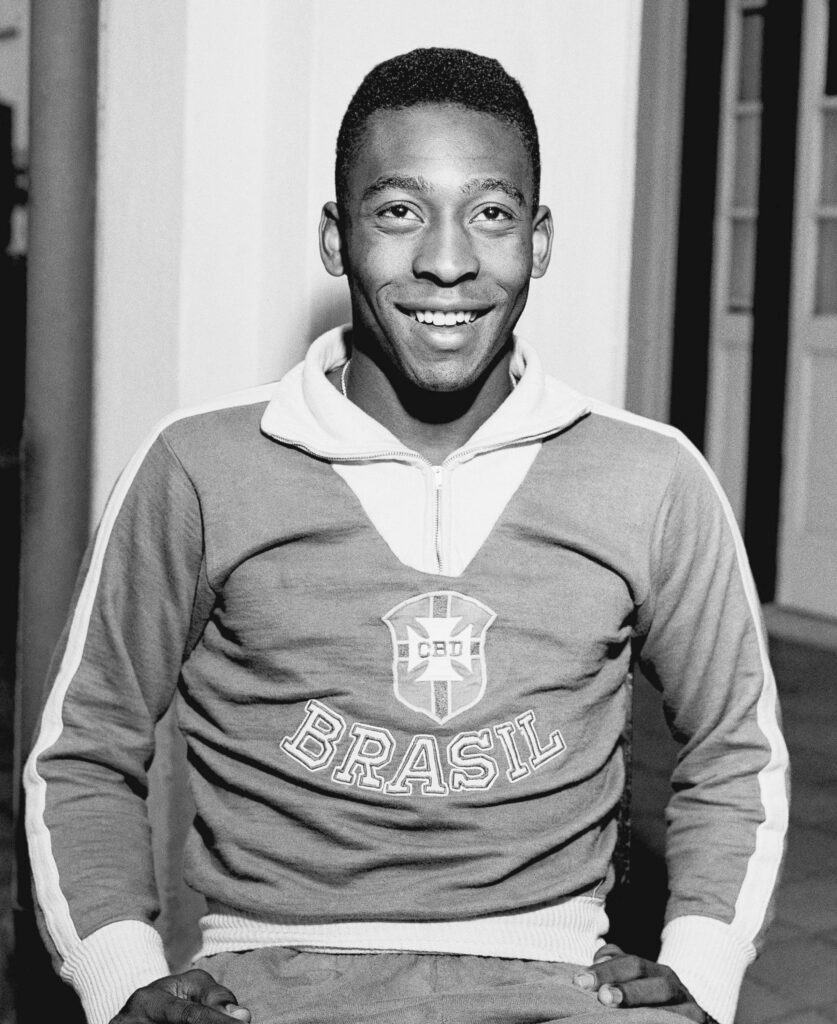
He carried his country to soccer’s heights and became a global ambassador for his sport in a journey that began on the streets of Sao Paulo state, where he would kick a sock stuffed with newspapers or rags.
“Pelé changed everything. He transformed football into art, entertainment,” Neymar, a fellow Brazilian soccer player, said on Instagram. “Football and Brazil elevated their standing thanks to the King! He is gone, but his magic will endure. Pelé is eternal!”
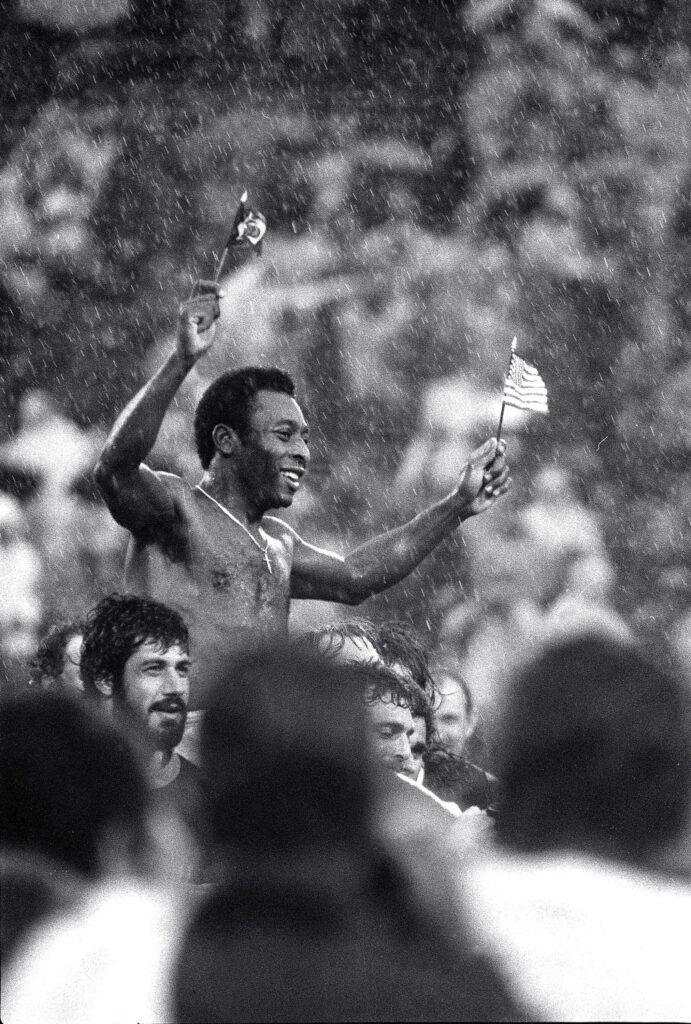
In the conversation about soccer’s greatest player, only the late Diego Maradona, Lionel Messi and Cristiano Ronaldo are mentioned alongside him.
Different sources, counting different sets of games, list Pelé’s goal totals anywhere between 650 (league matches) to 1,281 (all senior matches, some against low-level competition). When Maradona once interviewed Pelé, he playfully asked the Brazilian how he accumulated so many goals.
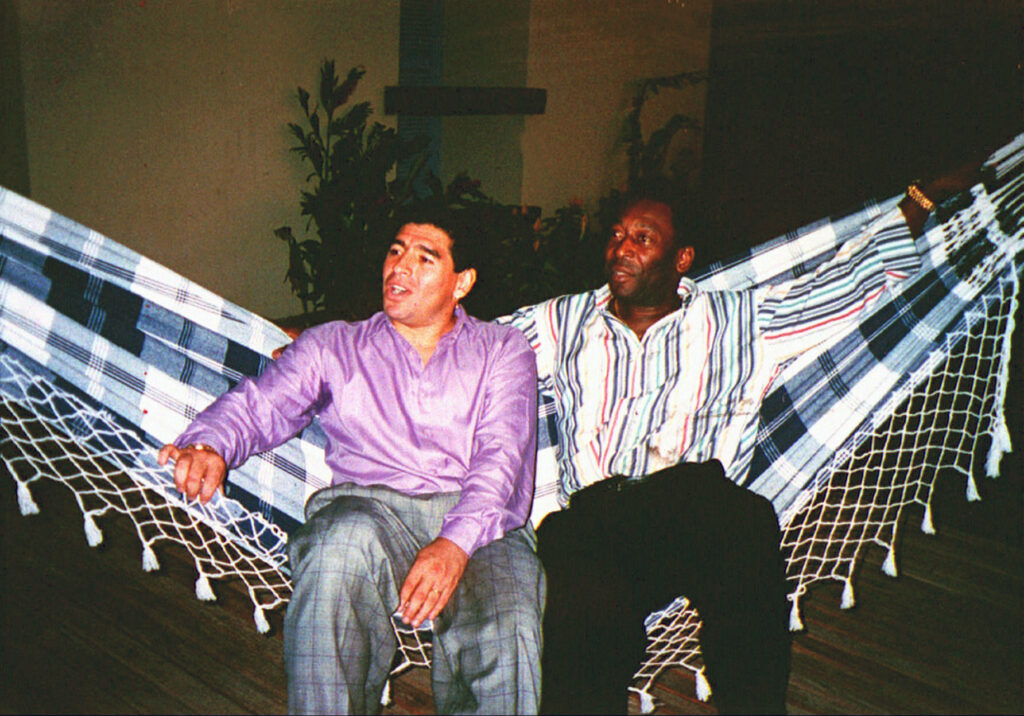
The player who would be dubbed “The King” was introduced to the world at 17 at the 1958 World Cup in Sweden, the youngest player ever at the tournament.
Pelé was the emblem of his country’s World Cup triumph of 1970 in Mexico. He scored in the final and set up Carlos Alberto with a nonchalant pass for the last goal in a 4-1 victory over Italy.
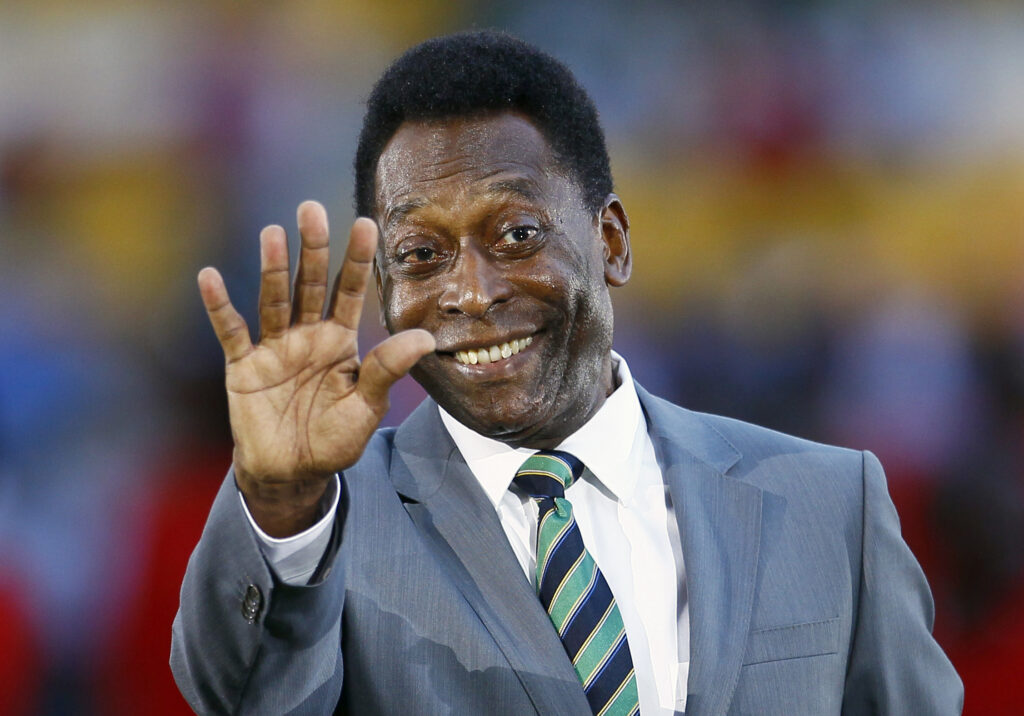
The image of Pelé in a bright-yellow Brazil jersey, with the No. 10 stamped on the back, remains alive with soccer fans everywhere. As does his trademark goal celebration — a leap with a right fist thrust high above his head.
Pelé’s fame was such that in 1967 factions of a civil war in Nigeria agreed to a brief cease-fire so he could play an exhibition match in the country. He was knighted by Britain’s Queen Elizabeth II in 1997. When Pelé visited Washington to help popularize the game in North America, it was the U.S. president who stuck out his hand first.
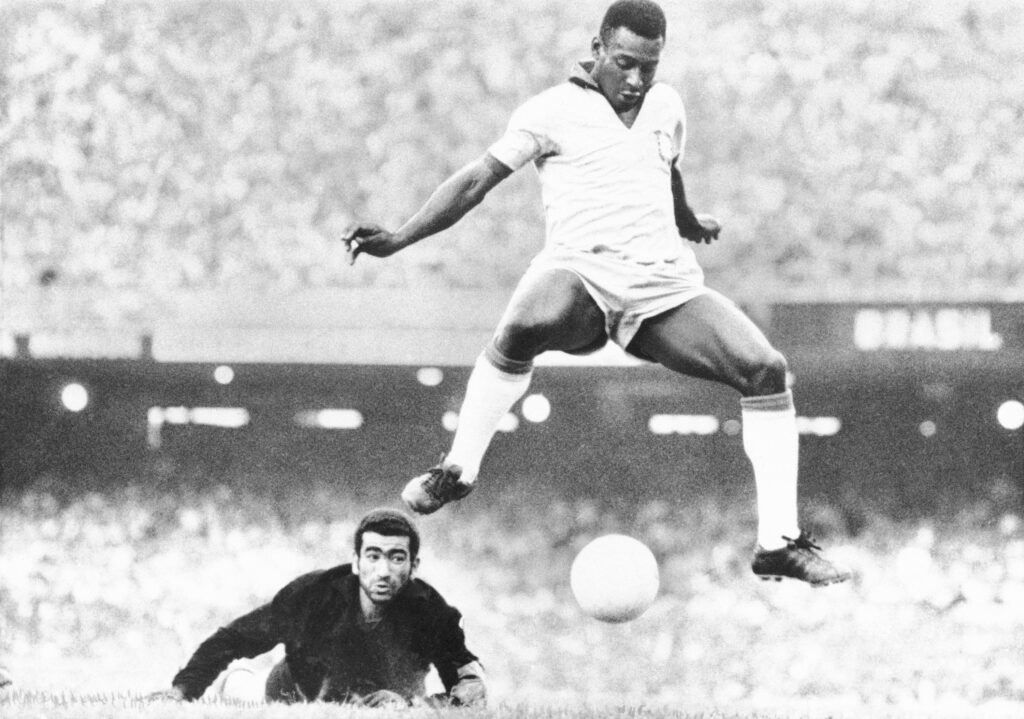
“You don’t need to introduce yourself because everyone knows who Pelé is,” Ronald Reagan said.
Pelé was Brazil’s first modern Black national hero but rarely spoke about racism in a country where the rich and powerful tend to hail from the white minority.
Opposing fans taunted Pelé with monkey chants at home and all over the world.
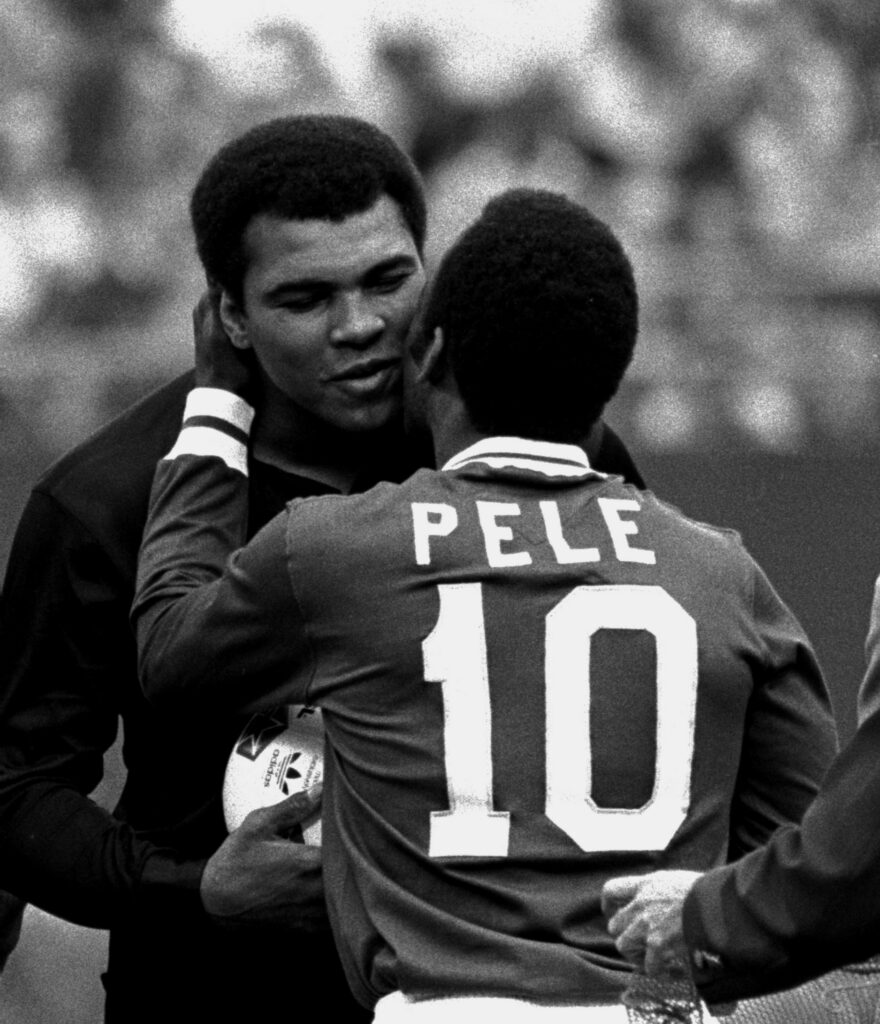
“He said that he would never play if he had to stop every time he heard those chants,” said Angelica Basthi, one of Pelé’s biographers. “He is key for Black people’s pride in Brazil, but never wanted to be a flagbearer.”
Pelé’s life after soccer took many forms. He was a politician — Brazil’s Extraordinary Minister for Sport — a wealthy businessman, and an ambassador for UNESCO and the United Nations.
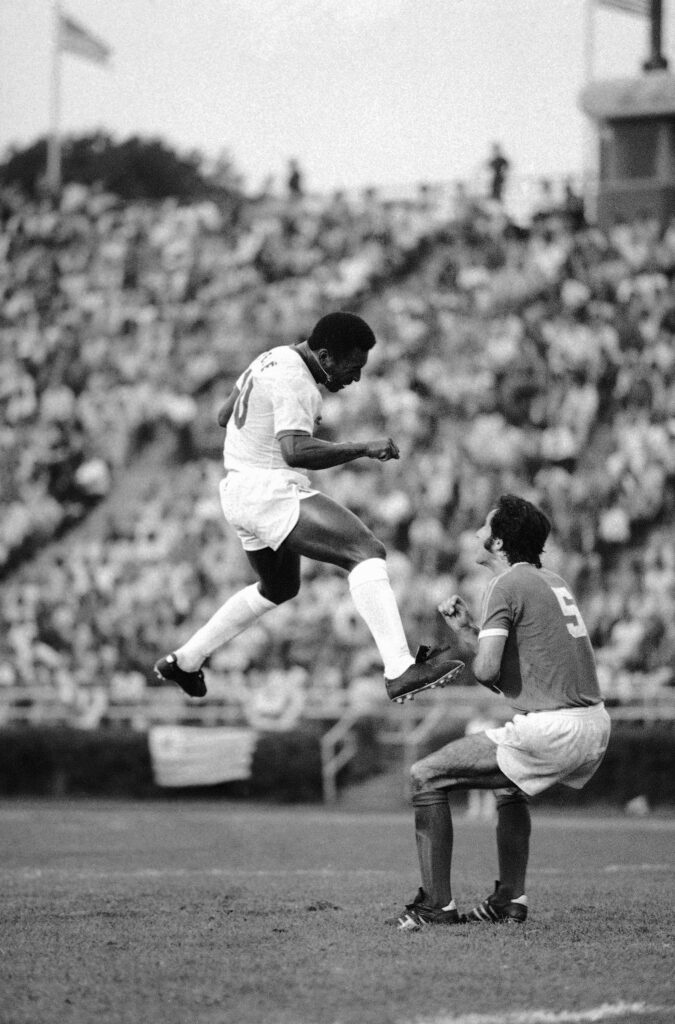
He had roles in movies, soap operas and even composed songs and recorded CDs of popular Brazilian music.
Pelé was an ambassador for his sport until his final years but as his health deteriorated his travels and appearances became less frequent. After needing a hip replacement, he started using a cane.
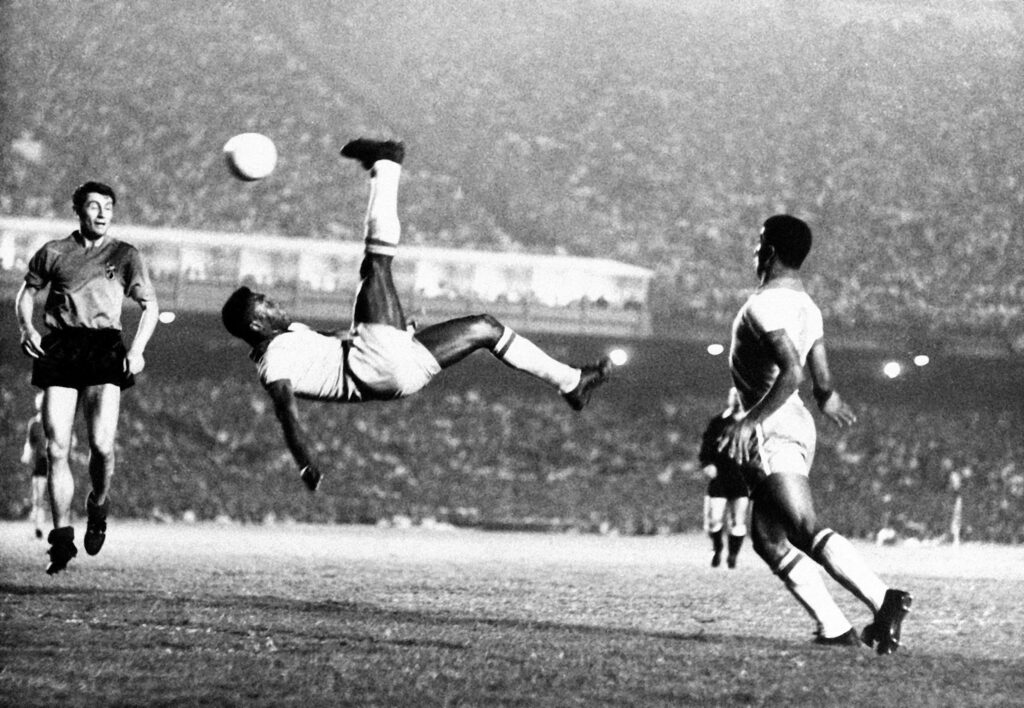
He was often seen in a wheelchair during his final years and did not attend a ceremony to unveil a statue of him representing Brazil’s 1970 World Cup team.
“He gets very shy, he gets very embarrassed,” his son Edinho told Globoesporte.com. “He doesn’t want to go out.”
Pelé spent his 80th birthday with a few relatives.
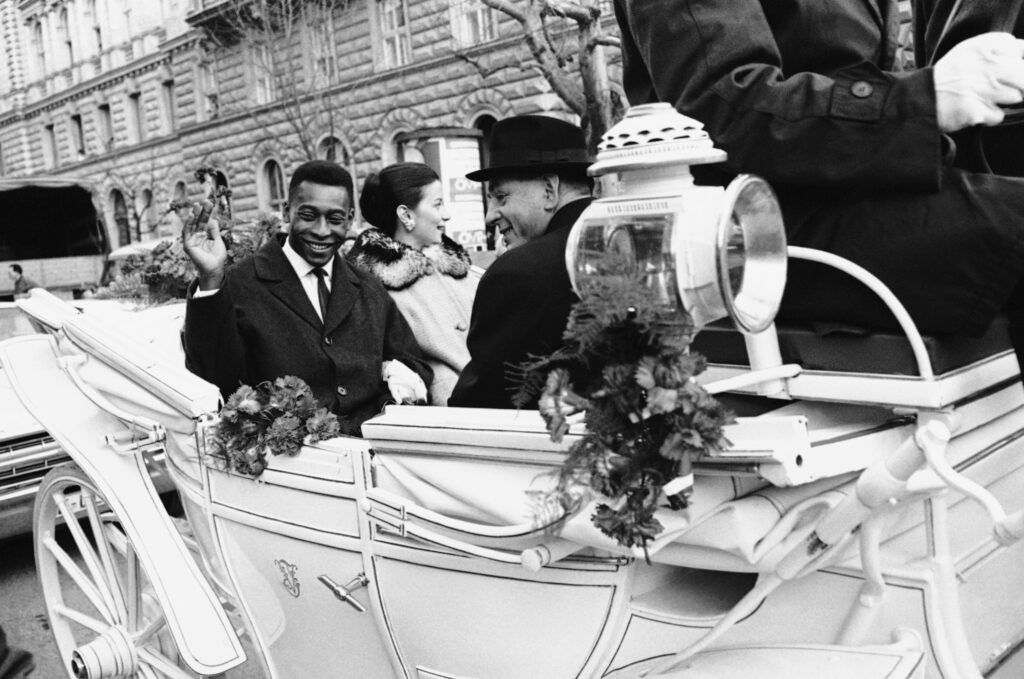
Pelé spent a month hospitalized in 2021 after surgery to remove a tumor from his colon. Pelé said he was ready “to play 90 minutes, plus extra time,” but soon started chemotherapy.
Born Edson Arantes do Nascimento, in the small city of Tres Coracoes in the interior of Minas Gerais state on Oct. 23, 1940, Pelé grew up shining shoes to buy his modest soccer gear. His father was also a player.

Pelé’s talent drew notice when he was 11, and a local professional player brought him to Santos’ youth squads. Despite his youth and 5-foot-8 frame Pelé’ scored against grown men with the same ease he displayed against friends back home. He debuted with the Brazilian club at 15 in 1956, and the club quickly gained worldwide recognition.
The name Pelé came from him mispronouncing the name of a player called Bilé. He later became known simply as ‘O Rei’ – The King.
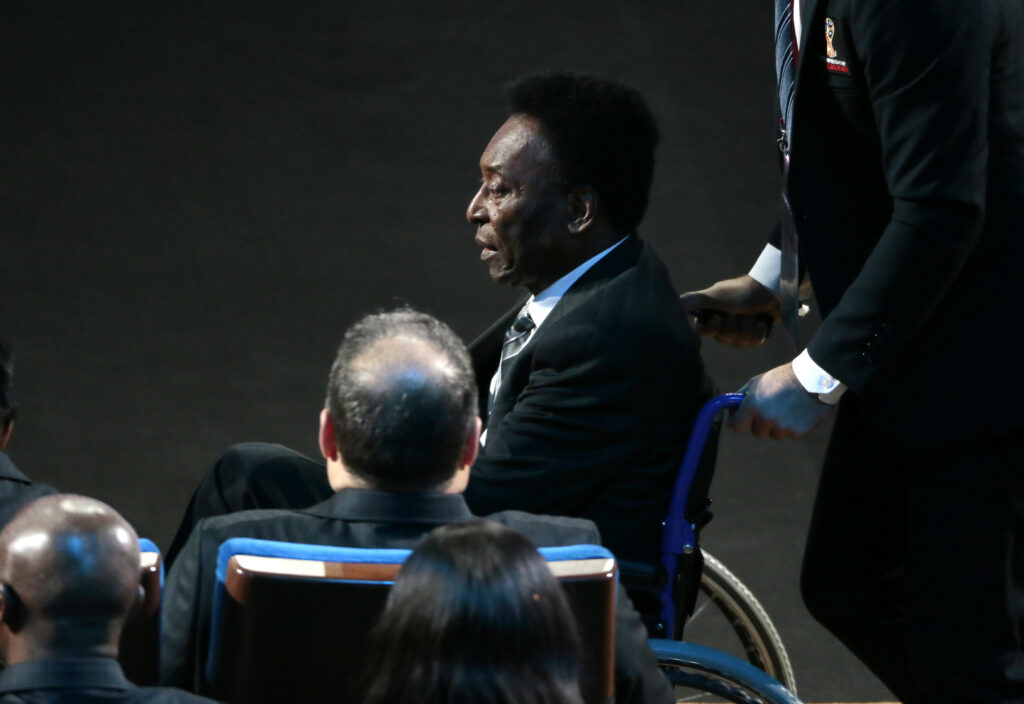
Pelé went to the 1958 World Cup as a reserve but became a key part for his country’s championship team. His first goal, in which he flicked the ball over the head of a defender and raced around him to volley it home, was voted as one of the best in World Cup history.
“When Pelé scored,” veteran Swedish midfielder Sigge Parling said, “I have to be honest and say I felt like applauding.”
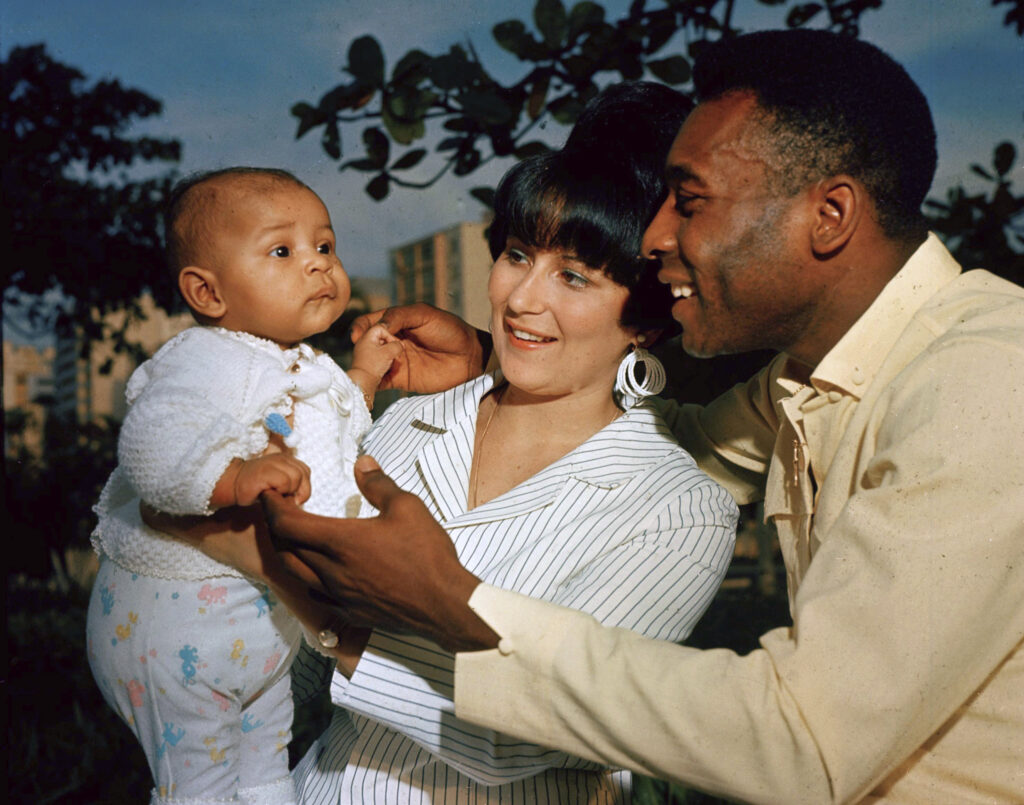
The 1966 World Cup in England — won by the hosts — was a bitter one for Pelé, by then already considered the world’s top player. Brazil was knocked out at the group stage and Pelé, angry at fouls and hard tackles by Portugal, swore it was his last World Cup.
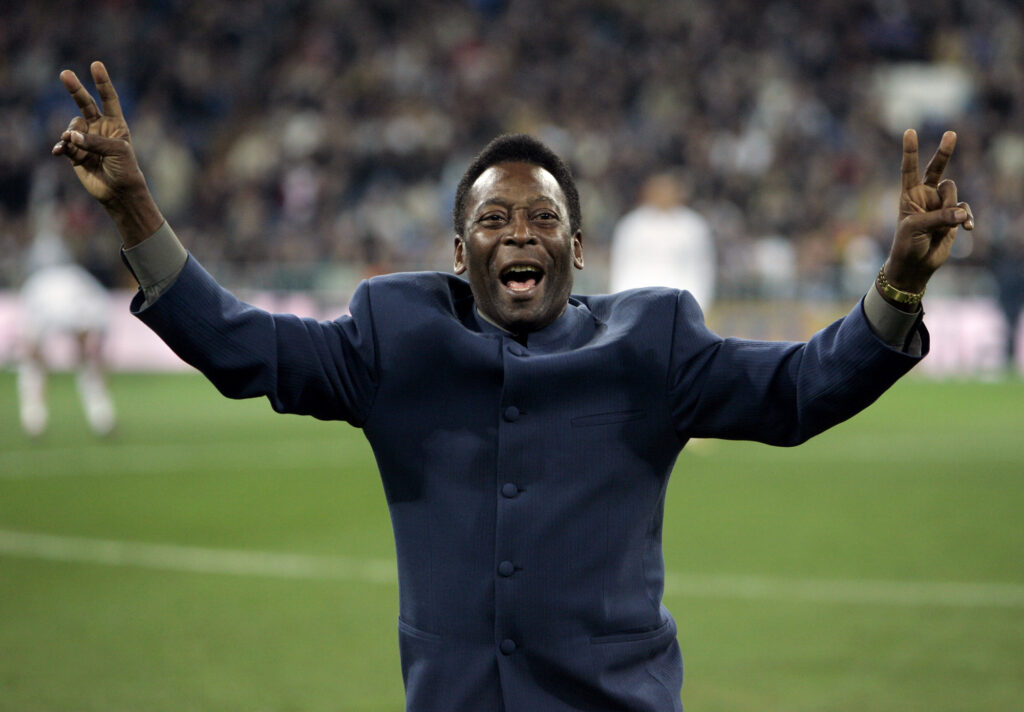
He changed his mind and was rejuvenated in the 1970 World Cup. In a game against England, he struck a header for a certain score, but the great goalkeeper Gordon Banks flipped the ball over the bar in an astonishing move. Pelé likened the save — one of the best in World Cup history — to a “salmon climbing up a waterfall.” Later, he scored the opening goal in the final against Italy, his last World Cup match.
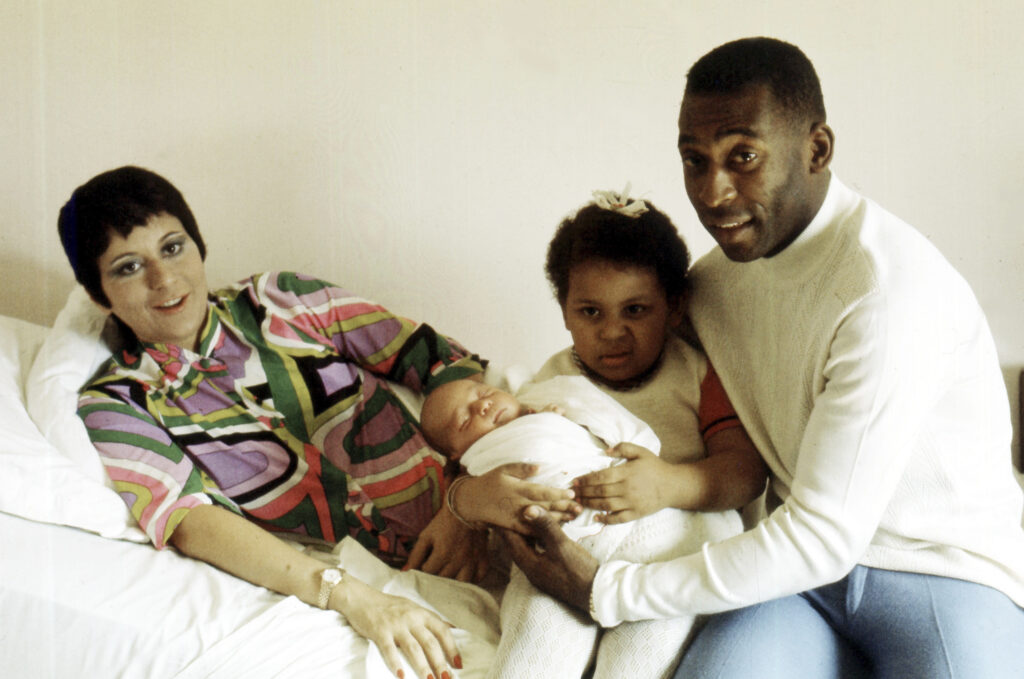
In all, Pelé played 114 matches with Brazil, scoring a record 95 goals — including 77 in official matches. Most of his goals came with Santos, which he led to five national titles, two Copa Libertadores trophies and two club world championships — all in the 1960s.
His run with Santos stretched over three decades until he went into semi-retirement after the 1972 season. Wealthy European clubs tried to sign him, but the Brazilian government intervened to keep him from being sold, declaring him a national treasure.
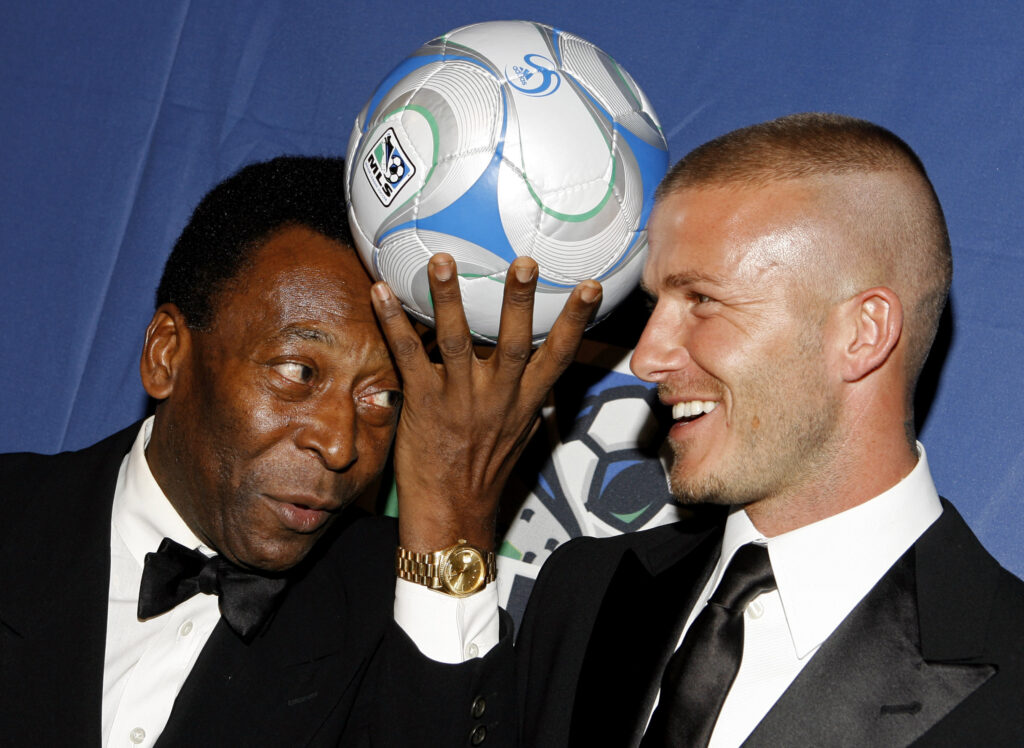
On the field, Pelé’s energy, vision and imagination drove a gifted Brazilian national team, with intricate passing combinations slicing defenses while leaving room for players to showcase flashy skills.
The fast, fluid style of play exemplified “O Jogo Bonito” — Portuguese for “The Beautiful Game.” And at the center of it all, like a maestro in command of his orchestra, was Pelé. It was his 1977 autobiography, “My Life and the Beautiful Game,” that made the phrase part of soccer’s lexicon.
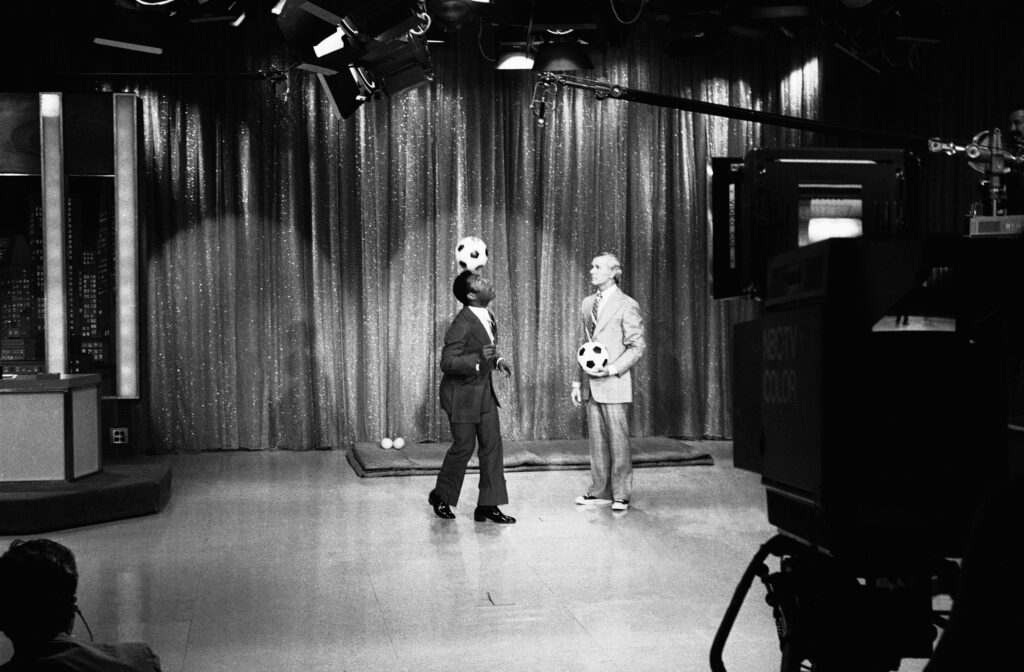
In 1975, he joined the New York Cosmos of the North American Soccer League. Although he was past his prime at 34 years old, Pelé briefly gave soccer a higher profile in North America before ending his career on Oct. 1, 1977, in an exhibition between the Cosmos and Santos. Among the dignitaries on hand was perhaps the only other athlete whose renown spanned the globe — Muhammad Ali.
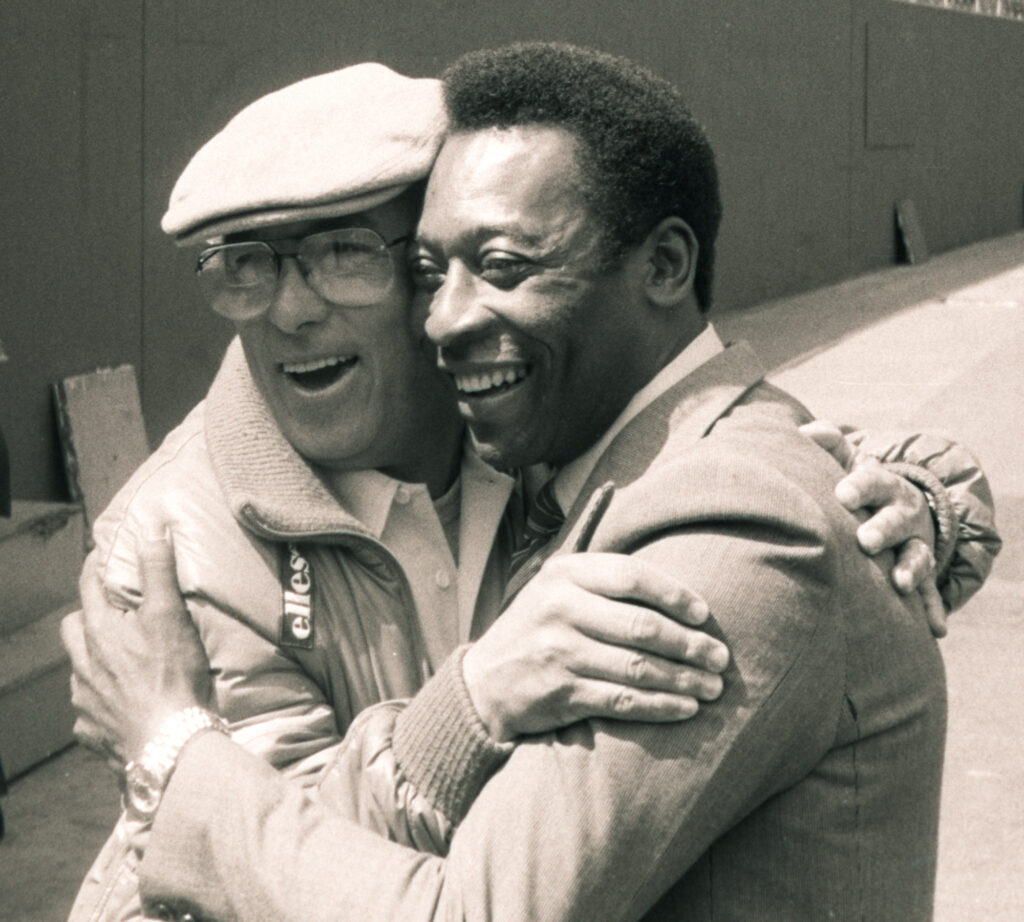
Pelé had two daughters out of wedlock and five children from his first two marriages, to Rosemeri dos Reis Cholbi and Assiria Seixas Lemos. He later married businesswoman Marcia Cibele Aoki.
Movies, music and TV helped Pelé to even more stardom
Newslooks- SAO PAULO (AP)
Whether or not Pelé scored almost 1,300 goals in his professional soccer career, all of his biographers agree that the three-time World Cup champion wrote more than 100 songs and sold more than 100,000 copies of one of his albums.
He was also in the movies, notably in the World War II film “Victory,” and was one of the stars of a Brazilian comedy that brought more than 3.6 million people to the theaters in the South American nation.
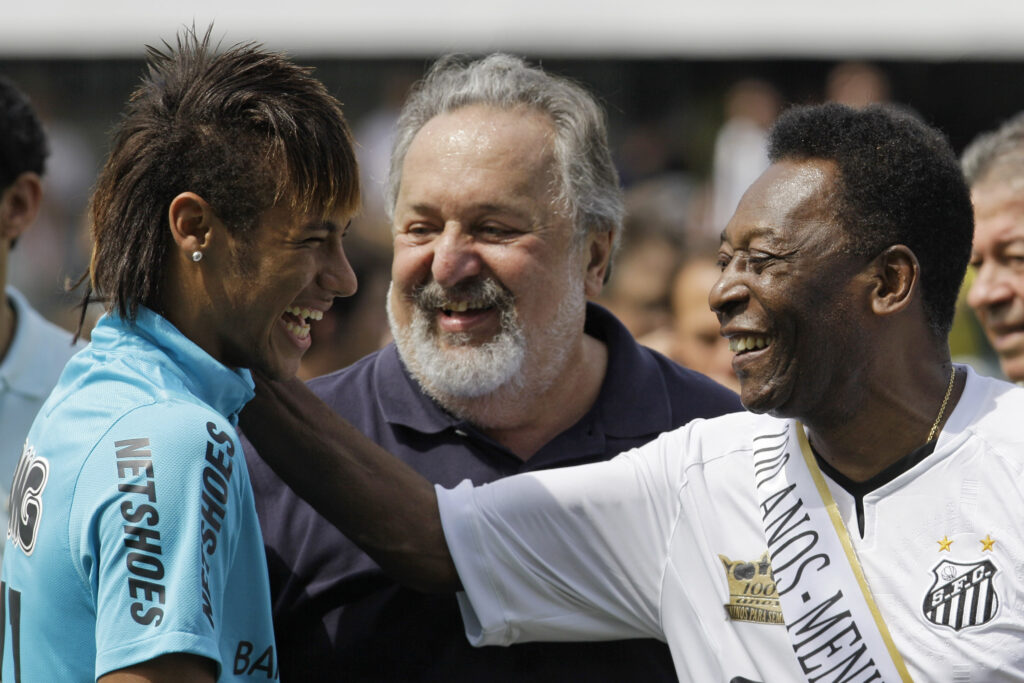
Pelé, whose full name was Edson Arantes do Nascimento, died Thursday with cancer at a hospital in Sao Paulo. He was 82.
Pelé’s success on the soccer field made him a sports icon, but he added to that with many performances as an actor and singer.
MOVIES
“King Pelé” (O Rei Pelé, 1962)
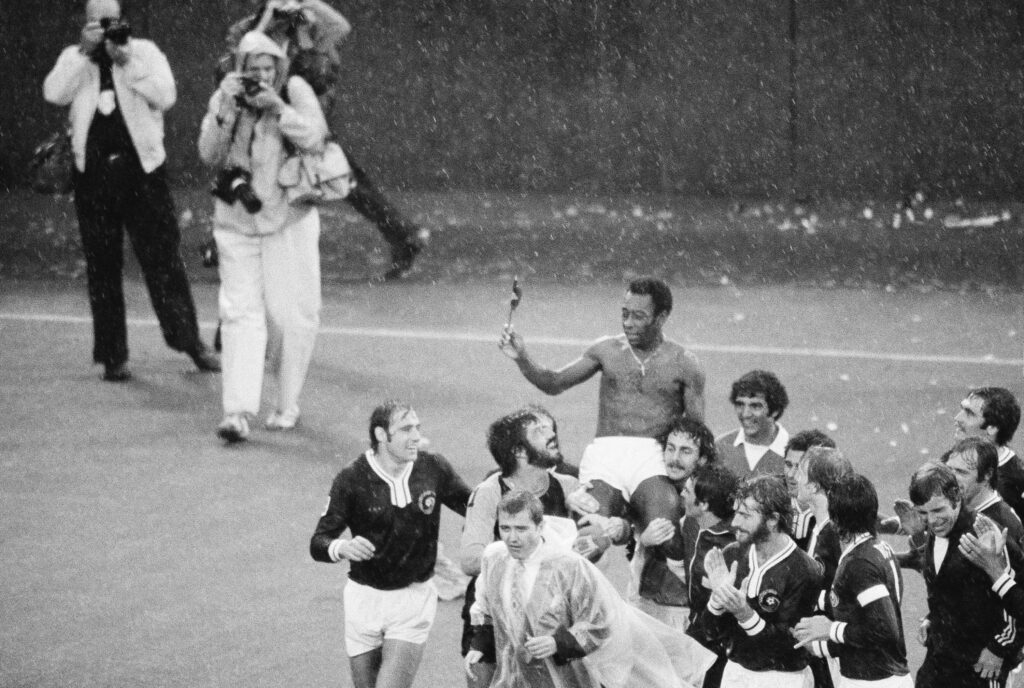
Pelé’s first big-screen moment came in a movie directed by Carlos Hugo Christensen in the same year he won his second World Cup title. The narrative starts at Pelé’s native city of Tres Coracoes, talks about his move to the Sao Paulo countryside city of Bauru and then on to Santos, where he becomes a global star.
“Victory” (1981)
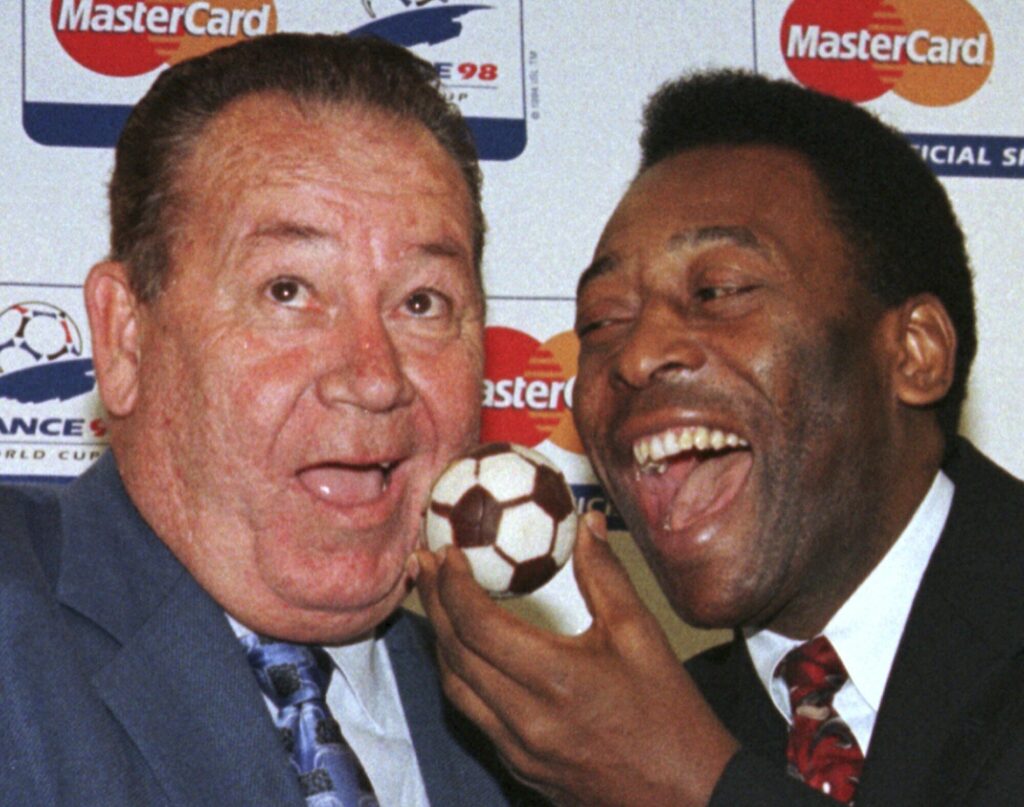
Directed by John Huston, it was the movie Pelé said he had most fun doing. He played Cpl. Luis Fernandes, a soldier from Trinidad.
The plot involves prisoners of war preparing to face a German team in Nazi-occupied Paris amid their attempt to escape. At the time with the New York Cosmos, Pelé had the chance play with very different teammates — actors Sylvester Stallone and Michael Caine.
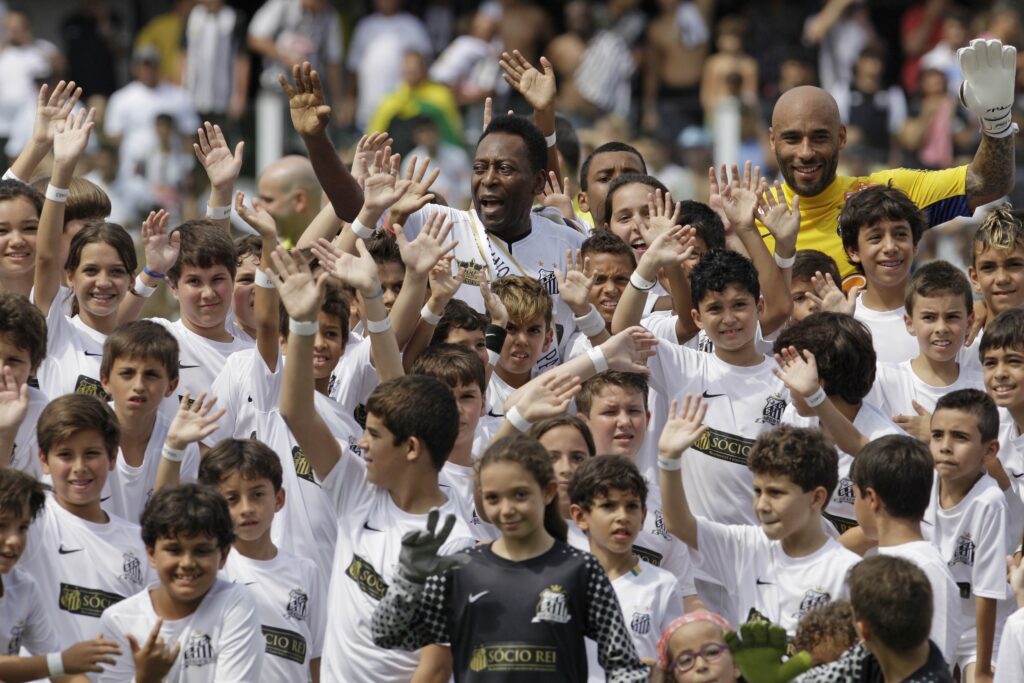
“If I had to give myself a grade as an actor it would be a 10,” Pelé jokingly said in several interviews after “Victory.”
He also told friends that the original script had Stallone in position to score the winning goal with a bicycle kick, but the American actor did not have the skills to do it, so he was placed as a goalkeeper instead. Former England captain Bobby Moore is also in the film, along with several other professional soccer players.
“Victory,” known as “Escape to Victory” in many places, made almost $28 million at the box office.
“The Clumsies and the King of Soccer” (Os Trapalhões e o Rei do Futebol, 1986)
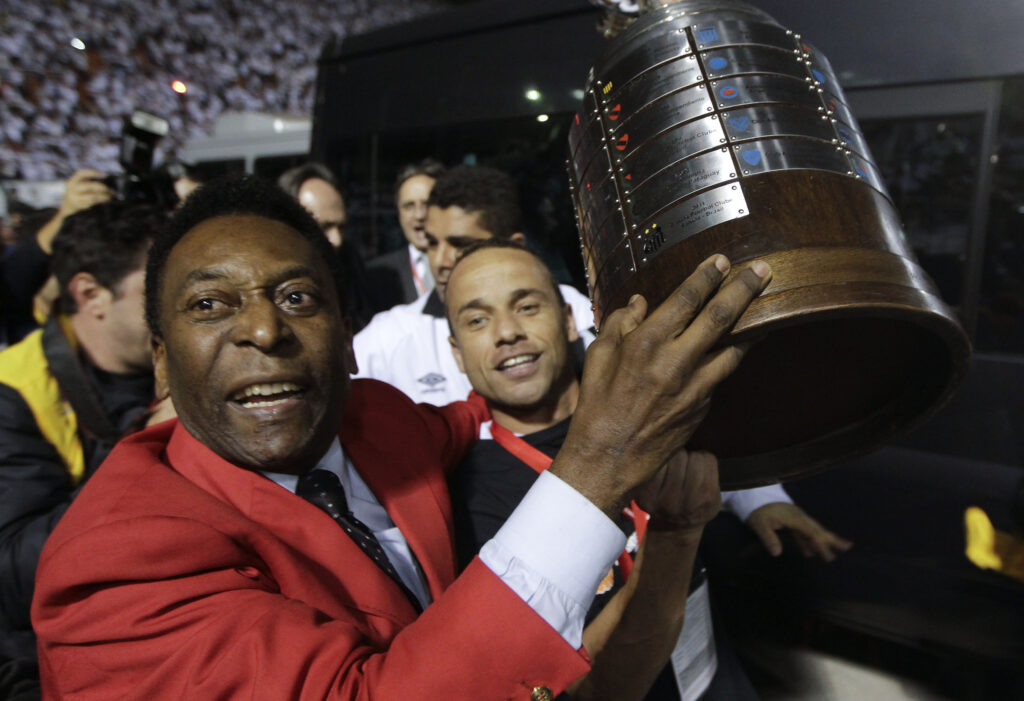
This was an association between two of Brazil’s most popular brands at the time — a recently retired Pelé and a Three Stooges-like group of comedians who were widely popular for their TV program Os Trapalhões (The Clumsies). The movie’s opening was three days before the 1986 World Cup final in which Argentina, led by Diego Maradona, beat Germany 3-2. It took millions to the cinema in Brazil that year.
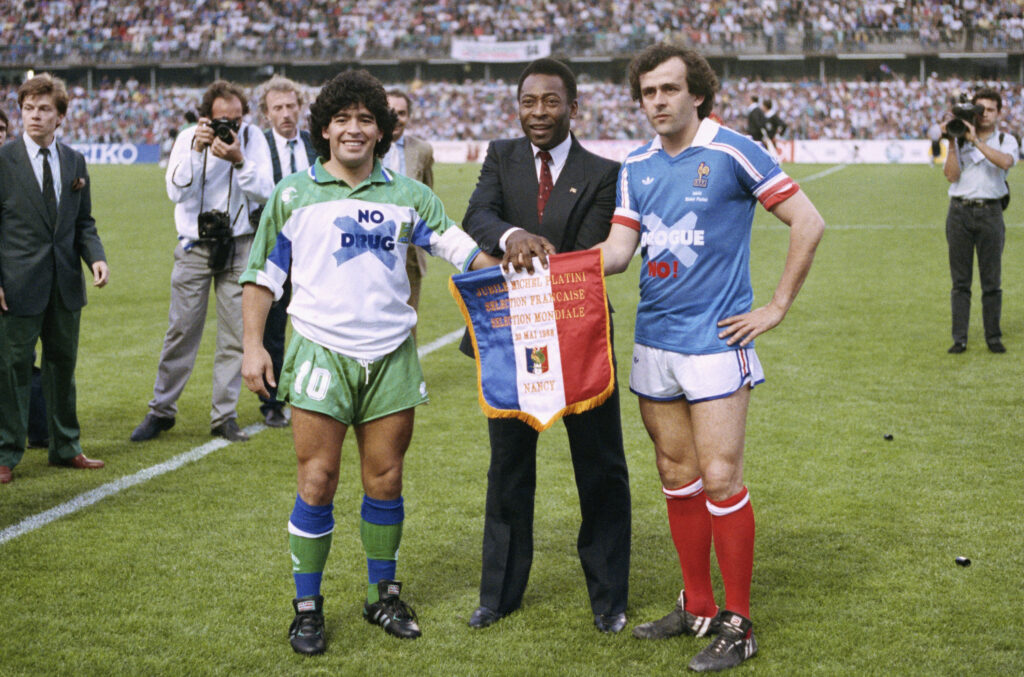
Pelé played the role of a sports reporter named Nascimento who replaced the injured goalkeeper of a team named Independência Futebol Clube and scored the winning goal of a match with a goal kick.
Pelé also took part in documentaries, including “This is Pelé” (1974), “Pelé Eterno” (2004) and “Cine Pelé” (2011).
TELEVISION
Brazilians are almost as obsessed with soap operas as they are with soccer, and Pelé had many cameos. Most of his appearances were on TV Globo’s soap operas, which are often exported to the rest of the world.
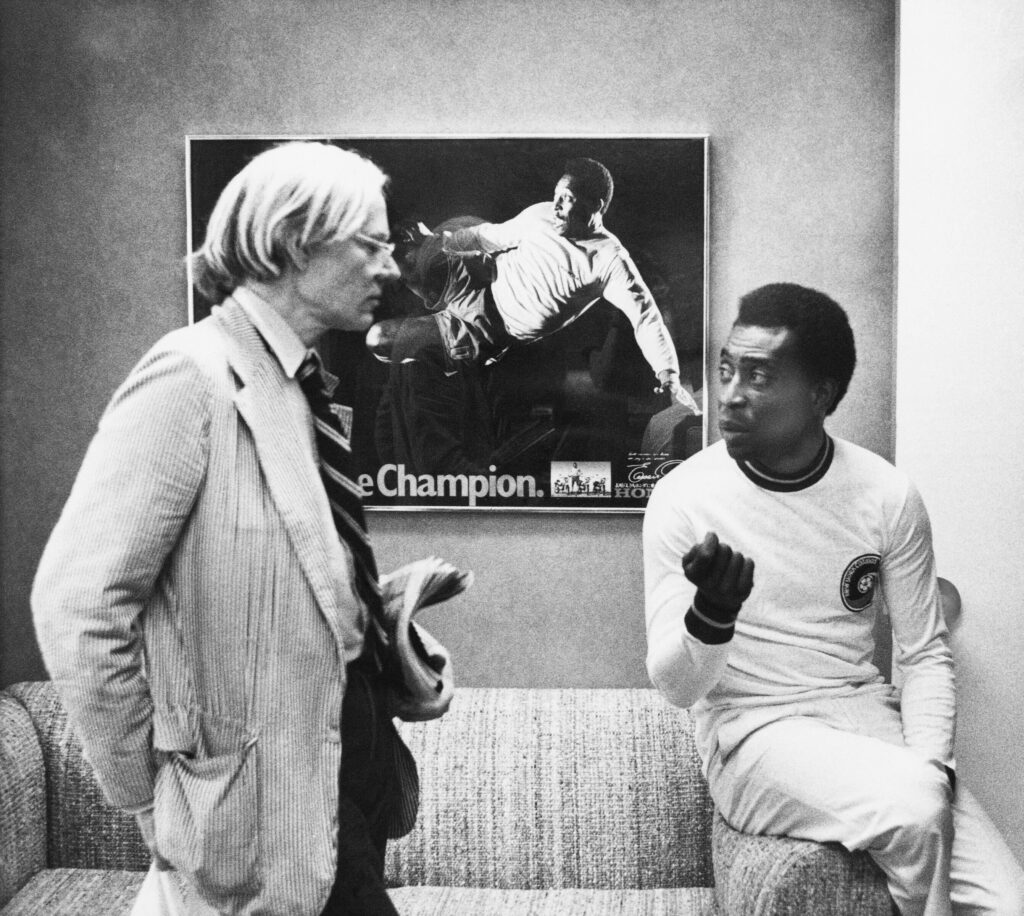
Author Ivani Ribeiro was the first to bring him to TV soap operas. She cast Pelé in a show named “Os Estranhos” (The Strangers), in which he played the role of a famous writer who lived on an island and had extraterrestrial friends.
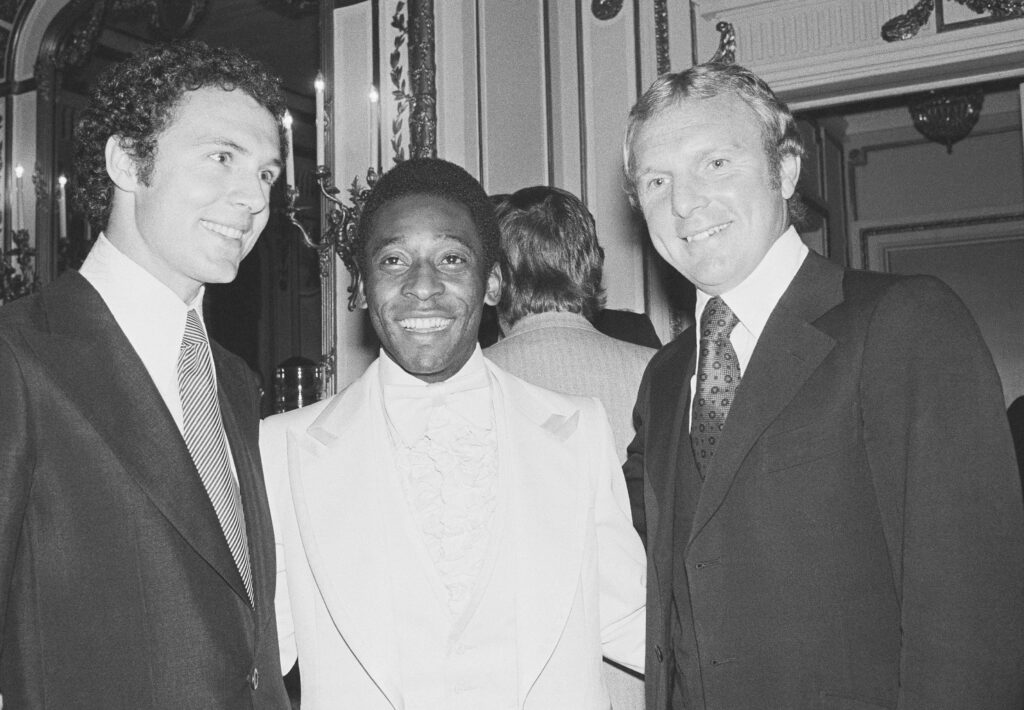
Pelé’s last famous appearance in a soap opera came in 2002 in “O Clone” (The Clone), which was popular in dozens of other countries. He played himself and sang the song “Em Busca do Penta” (Seeking the Fifth). The lyrics were about Brazil winning the World Cup again. Three months later, Brazil won the World Cup for the fifth time.
MUSIC
“Peléginga” was his biggest hit. Recorded with a choir and an orchestra, the samba album included 12 songs written by Pelé and was released in 2006.
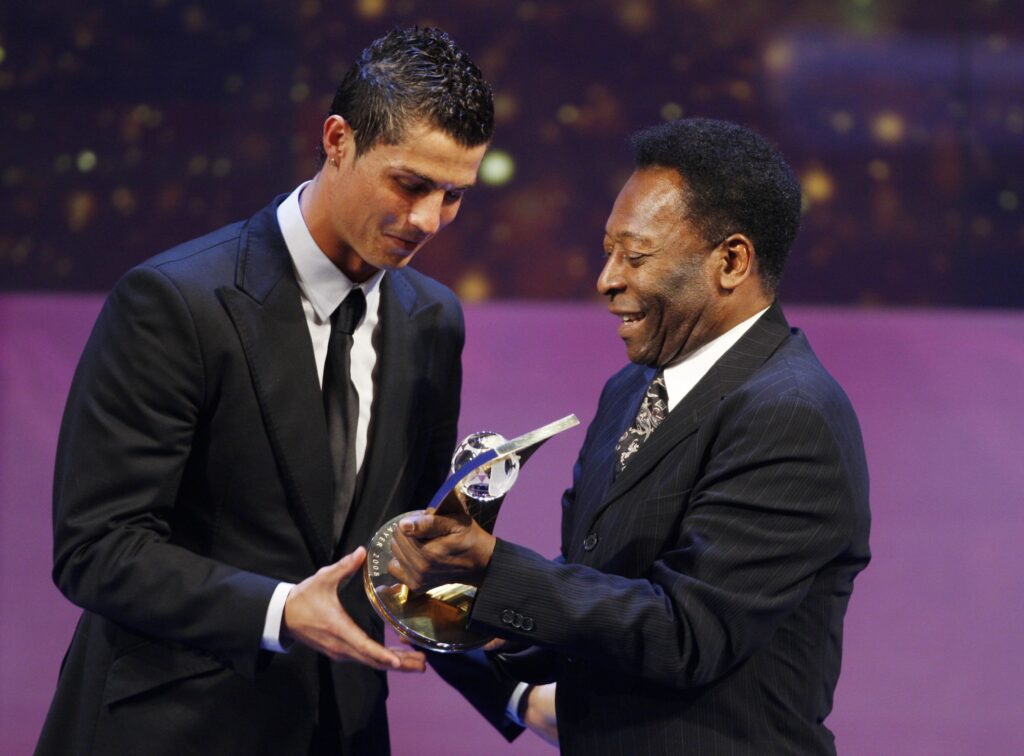
Three years later, the Brazilian star wanted to record another album for international audiences and invited U2 singer Bono to share the vocals on one of the tracks. The Irishman was on tour with his band, however, and the project was abandoned.
Pelé also recorded a record with Brazilian diva Elis Regina and released an album that was produced by Grammy-winning singer-songwriter Sergio Mendes.
COMICS
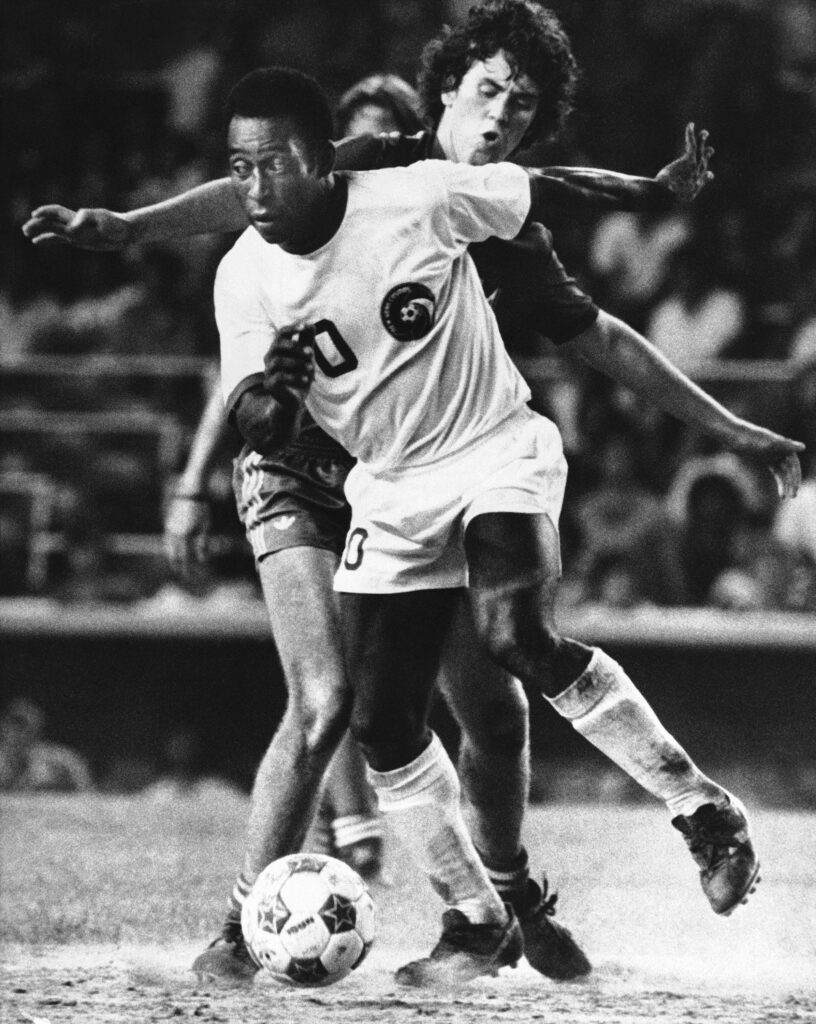
Pelé has also been a character in widely popular comic books in Brazil. Cartoonist Mauricio de Sousa and Pelé, who was playing for New York Cosmos at the time, reached a deal in 1976 for the publication of children’s stories in comic book format.
At first, Pelé didn’t like the childlike features of Pelezinho. Sousa said in several interviews the player wanted to be portrayed as a strong child athlete. The cartoonist then made a suggestion that he should ask his children what they thought. Both kids loved it.
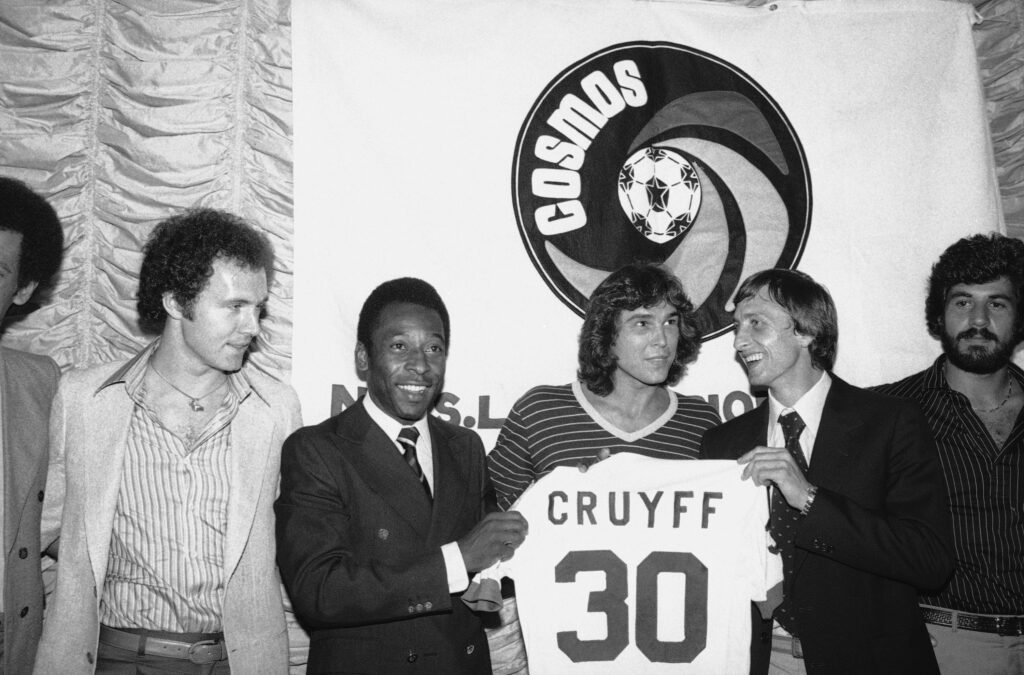
Sousa used several stories from Pelé’s childhood in Pelezinho plots. The comic books were published regularly from 1977-86, and after that on special occasions. The latest was in 2013 as Brazil hosted the Confederations Cup, a warm-up tournament for the following year’s World Cup in the country.

